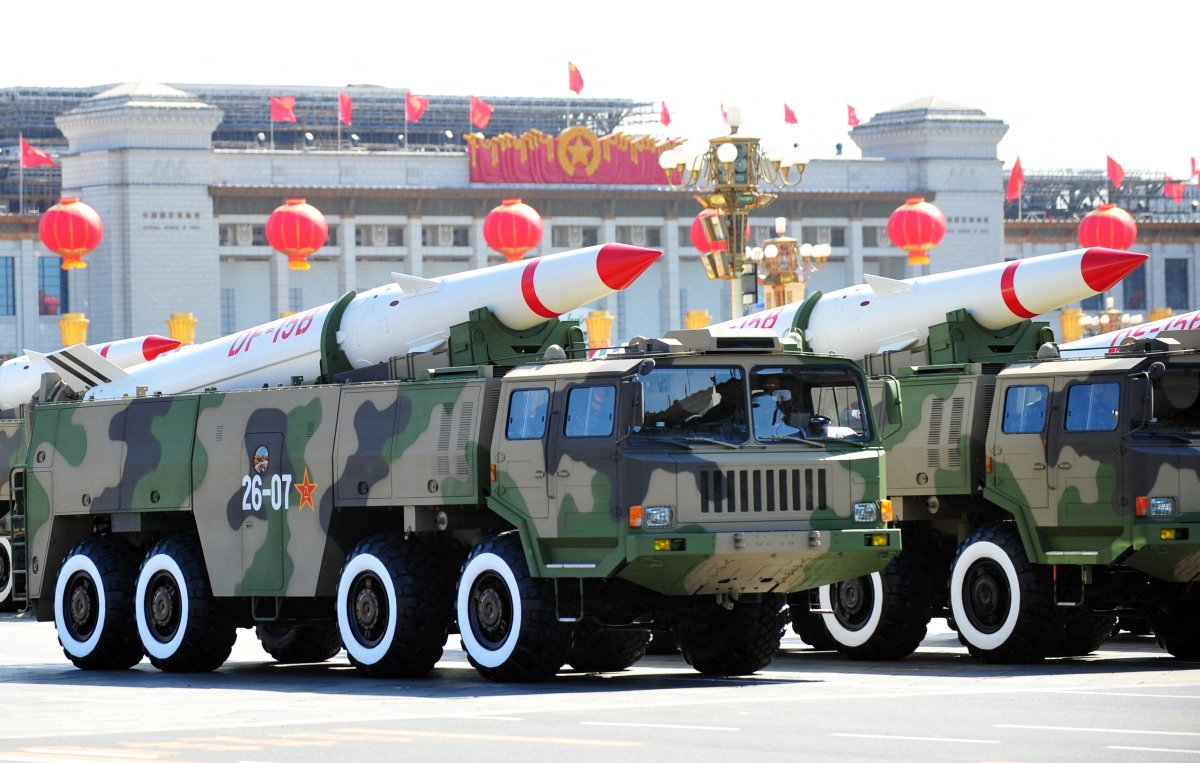Micah McCartney
A number of potential flash points around the world feature in a new report from nonpartisan think tank the Council on Foreign Relations (CFR).
The Preventive Priorities Survey is organized in three tiers according to conflict likelihood and degree of impact on American interests.
The report dropped as China is accused of meddling in Taiwan's democratic process as the self-ruled, Beijing-claimed island prepares for its January 13 national elections—and as Moscow carries out missile attacks with renewed vigor as the war in Ukraine approaches its second anniversary.
A contingency in the Taiwan Strait or major escalation in the Russo-Ukrainian War that risks drawing in the U.S. and NATO are among eight scenarios categorized as Tier I risks. These are defined as either highly likely to occur with a high potential impact on U.S. interests or moderately likely with a high impact.
Newsweek has reached out to the U.S. State Department with a request for comment.
 A file photo shows Chinese missiles on display in Beijing on October 1, 2009. A conflict between China and Taiwan is rated a Tier 1 potential flash point in the Council on Foreign Relations' 2024 Preventive Priorities Survey.FREDERIC J. BROWN/AFP VIA GETTY IMAGES
A file photo shows Chinese missiles on display in Beijing on October 1, 2009. A conflict between China and Taiwan is rated a Tier 1 potential flash point in the Council on Foreign Relations' 2024 Preventive Priorities Survey.FREDERIC J. BROWN/AFP VIA GETTY IMAGESTier I Crises
Other Tier I crises include Israel's war with Hamas spilling over into a regional conflict; a military confrontation between Israel and Iran over the latter's support for militant groups such as Hamas and Lebanon's Hezbollah; and a showdown on the Korean Peninsula sparked by the North's nuclear and intercontinental ballistic missile tests.
Closer to home, political polarization surrounding the U.S. presidential election could lead to "acts of domestic terrorism and political violence," and the risk of a cyberattack on critical infrastructure, including electoral systems, "by a state or nonstate entity" is also mentioned.
Additionally, "criminal violence, corruption, and economic hardship" in Mexico and Central America could lead to "a surge in migration" at the U.S.'s southern border.
Notably, three Tier 1 contingencies were, for the first time since the CFR began publishing the annual report, listed as having both a high likelihood and high impact: U.S. election-related violence, expansion of the Israel-Hamas conflict, and a flood of migration to the U.S.
Tier II Crises
The report also lists seven potential Tier II episodes of moderate likelihood and impact, such as clashes between Turkey and Kurdish groups in Iraq or Syria, or of low likelihood but high impact, such as China's territorial feud with the Philippines in the South China Sea triggering U.S. military action in support of its Mutual Defense Treaty ally.
Tier III Crises
The lowest category, Tier III, describes moderately likely, low impact situations like international peacekeeping forces failing to stem Haiti's spiral into chaos or new fighting in Sudan or South Sudan.
The report was published January 4 by the CFR's Center for Preventative Action, which says it "seeks to help prevent, defuse, or resolve deadly conflicts around the world and to expand the body of knowledge on conflict prevention."
The Preventive Priorities Survey has been conducted annually since 2008 to "help the U.S. policymaking community prioritize competing conflict prevention and mitigation demands."
The assessments in the 2024 edition are based on the responses of about 550 U.S. government officials, academics, and other foreign policy experts asked last November to gauge the impact and plausibility of crises.
No comments:
Post a Comment